How to make almond brittle
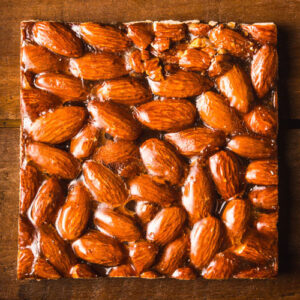
Found in variations across the world, almond brittle is a crisp toffee-like confection of sugar and almonds. Known in France as croquante, in Italy as croccante, and as torrone Siciliano in Sicily, it is widely associated with Christmas yet available all year round. Wrapped in cellophane, with maybe a ribbon or two, it is certainly hard to resist.
As a pastry chefs staple, the technique of bonding nuts in hard caramel forms the basis of many of dessert; classic or otherwise. The single almond, with its spear of hard crack caramel pointing skywards, or dramatic glassy shards added to create texture and height. Grind those shards to a fine powder and scatter it like crystal fairy dust for yet another dimension.
Smash it, bash it, leave it break-your-teeth whole. Almond brittle is something we simply can’t get enough of.
And as if that weren’t enough, almond brittle is sometimes then dipped, or coated, in chocolate. Time for a happy dance.
How to make almond brittle
There are so many variations of this simple recipe, all following along the same lines yet with slight differences. Some recipes use a classic caramel, made from just sugar, whilst others add water and/or butter. Most recipes use whole almonds, although variations can be found that use chopped, flaked or slivered almonds. Most recipes specify whole, unpeeled almonds but you could use blanched almonds if you wish. There’s more on blanched almonds here.
And finally, although a classic almond brittle is kept as simple as possible, you can take it wherever you want in terms of flavour. Use salted almonds, or smoked almonds. You can add spices to your almonds, such as cinnamon. Maybe add a little miso to the mix.
Regardless of the exact recipe you choose to follow, you will want to begin with toasted almonds. Here’s some ideas for toasting almonds.
The toasted almonds are stirred into skin-blisteringly hot caramel (that’s your skin not theirs) and spread flat on a tray to cool and harden. It is deceptively simple, and not without peril. You need to be focused, paying attention to detail, and taking care. Boiling sugar is really really hot. And it sticks.
Almond brittle recipe
We are going to keep it classic. The recipe makes a deep dark caramel with a grown up edge that borders on bitter. Made in the traditional way, with just sugar, it is actually quicker and easier than labouring over a pan of water, sugar and butter.
Ingredients
500g sugar
500g whole almonds
half a lemon
- Toast and cool your almonds, as described earlier.
- Line a flat baking sheet with baking parchment (sprinkle a little water on the tin first so the paper sticks) and grease with olive oil.
- Place a frying pan over a low heat and add the sugar. As it begins to melt, shake the pan. Do not stir. If you really need to fiddle with it, use a wet pastry brush to clean down the sides of the pan.
- Keep shaking it occasionally until all the sugar has melted and you have a dark amber caramel.
- Tip in the almonds and stir to coat using a wooden spoon. Work quickly.
- Tip onto your prepared baking sheet, tilting the tray to level it out.
- Once cool enough to touch, wet your fingers and press the surface to even it out. It will cool and solidify very quickly.
- Rub the surface with the cut lemon. This will add a professional shine and a hint of acidity to the flavour.
- Either cut with a large knife before it cools completely solid, or break into shards once brittle.
How to make chocolate almond brittle
Once you have cut or broken your almond brittle, you can take it one step further and dip it in chocolate. Anything goes here. You can fully submerge it in chocolate, or just a quick dip of the underside to form a thin layer. Or dip a corner. Maybe dip the bottom, and drizzle across the top using a different type of chocolate.
Find out how to temper chocolate in our article on making chocolate bark.
How to store almond brittle
Sugar is a humectant, which means it attracts water. The last place it wants to be is the fridge. Ideally it wants to be kept in a cool dark place, and away from air. Wrapped in cellophane and kept in an airtight tin, it will keep for several months.
Why not check out our other great ideas for using almonds?
Did you know it can be way more cost effective to buy almonds in bulk?
This article was reproduced on this site with permission from operafoods.com.au the “Online Bulk Foods Grocer”.
See original article:- How to make Almond Nut Brittle
Almond milk and dairy alternatives
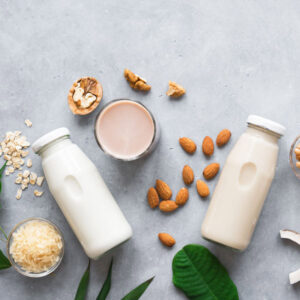
Almond milk still makes up around two-thirds of all plant milks sold, and remains one of the top choices for fans of homemade nut milk. The popularity of dairy alternatives continues to grow.
Choosing the best alternative to dairy milk is a personal decision that will depend on a number of factors. Some choose non-dairy milk as part of a vegan diet. Others choose plant milk because of environmental concerns yet do not follow an entirely plant-based diet. In fact, 90% of plant milk buyers still buy other dairy products. Some people are lactose intolerant whilst others simply prefer the taste of dairy alternatives.
There may be several situations in which you may wish to switch out dairy for a non-dairy alternative yet it often begins with deciding which alt-milk to order in your morning flat white.
The rise of alt-milks
Alternatives to dairy milk were once only found in dusty health food shops frequented by hard core wholefood fanatics. Now, everybody is dissing dairy and opting for plant-based milks instead. Despite the growing popularity of veganism, the demand for alt-milks is created in coffee shops where even the most ardent of meat eaters seems to prefer their latte to be oat based.
Alt-milks were eventually promoted from the health store to the supermarket, but it was not until they were re-formulated to take space in the chiller aisle that interest really began to take hold.
Different types of non-dairy milk
There are now many types of non-dairy milk available, in both shelf-stable and refrigerated versions. The standard was once soy milk, yet concerns over genetically modified crops were partially to blame for its fall from grace. Some remain devoted to soy milk, yet almond milk became the standard alt-milk for some time. Until oat milk came along.
Many people choose a wide variety of alt-milks, choosing them by their suitability for the job in hand rather than showing loyalty for one particular type.
What is the most sustainable non-dairy milk?
All non-dairy milks have a much smaller carbon footprint than their dairy counterparts. The major concern with oat milk is the amount of land required to grow vast crops of oats. Almond milk raises concern over the amount of water used in the intensive farming of almonds. Yet it still has a marginally lower carbon footprint than oat milk. Luckily, all of our Australian almonds are pesticide-free and grown with minimal intervention. That includes more sustainable uses of water.
Almond milk vs dairy milk
Unsweetened almond milk is lower in calories than all cows milk, including skimmed milk. Low in carbohydrate, it is the keto milk of choice. It is higher in fat than skim and semi cows milk, but lower than in whole milk. Bear in mind that the fat in almonds is healthier than the saturated fat found in dairy.
Most commercial non-dairy milks are supplemented with calcium and vitamin D.
Oat milk vs almond milk
Oat and almond have become the two major players in the alt-milk game. Oat milk is sweet and creamy, although the commercial varieties may still contain thickeners and additives.
Commercial almond milk can be thin and watery with very little actual almond content. It does have significant vitamin E content, whilst oat milk does not. It is also gluten-free. You can read more about the full story on the gluten content of oats here.
Oat milk, however, is lower in fat, with more protein and fibre than almond.
Homemade almond milk vs store bought
Essentially all alt-milks are a product, including commercial almond milk, that bear little or no relation to homemade nut milk.
Homemade almond milk is thick and creamy, and the only additives it contains are the ones you choose to put there. Almond milk is made from nuts and water, and the further away it gets from homemade the more things are likely to be added to that equation. Commercial almond milk is likely to have more sugars, additives and thickeners in it than it does almonds.
Almond milk that you make yourself will be creamy, and taste of nuts. Buying your almonds in bulk to make your own almond milk offsets the cost. As your homemade almond milk contains more nuts, it also has a much higher nutritional value. Especially if you use the almond pulp to make almond flour for your gluten-free bakes.
Btw, what is the best non-dairy milk for coffee?
Many alt-milks don’t perform well in hot drinks as they have a tendency to split at high temperatures. Plant proteins just don not foam like cows milk can. This is why most cafes choose commercial brands created for barista use. When it comes to making truly lovely barista style coffee, oat milk wins hands down. Sorry, almond.
Explore our pesticide-free Australian almonds and don’t forget that you can buy almonds in bulk at wholesale prices.
This article was reproduced on this site only with permission from our parent co. operafoods.com.au the “Gourmet Online Wholesale Grocer”. See the original article here:- Almond Milk and other Dairy Alternatives
Baking with almonds – classic frangipane
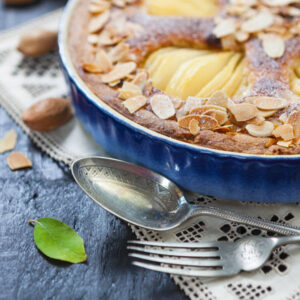
Almonds are not just ideal for gluten-free baking but are also a mainstay of classic patisserie. Here we take a look at the king of the classics; almond frangipane.
What is frangipane?
Frangipane is a classic French pastry cream found in the repertoire of every pastry chef. The main ingredient in frangipane is ground almonds.
Far easier to make than its elegant reputation would suggest, frangipane is simply a mix of almonds, butter, eggs and sugar. Sometimes flour is added to give the mix more stability. It can be mixed with creme patissiere, that other favourite of pastry chefs, to give a soft creamy richness.
How to make frangipane
Frangipane begins with ground almonds. To make your own ground almonds you will need to blanch your almonds. You can put all of the ingredients into a mixer and beat together but the classic way is cream the butter and the sugar first, as you would to make a cake.
Recipe for a classic frangipane almond cream
To fill an 9 inch tart case 250g butter, soft 250g caster sugar 2 egg 2 egg yolk 2 tbsp plain flour 250g ground almonds 1 tsp vanilla paste
-
Cream the butter and sugar together until pale and fluffy. An electric hand mixer is the ideal tool for the job.
-
Beat the eggs and yolks together and beat into the sugar mixture with the vanilla paste.
-
Lightly fold in the ground almonds and the flour.
Make a frangipane tart
The easiest way to make a foolproof frangipane tart is to use tinned fruit. Go for the kind in halves; pears, peaches or apricots.
To line a 9 inch flan tin you will need 300g of shortcrust pastry. The pastry will be cooked along with the almond filling, not blind baked.
Line the tart case and put it the fridge to chill. Pre heat the oven to 190C.
Fill the tart case with the almond filling to just over halfway. Drain the fruit and dry on a paper towel. Press the fruit halves into the filling, creating a circle around the edge. Fill in the gaps at the centre.
Bake in the centre of the oven for about 1 hour, or until the filling is set. It should be golden and well risen. Like cake, a knife inserted into the centre will come out clean.
Once the tart has cooled slightly brush with an apricot glaze made from 2 tablespoons apricot jam brought to the boil with a scant tablespoon of water. Scatter with flaked almonds and cool before slicing into portions. It is best served only just warm.
How to tell if frangipane is cooked
Frangipane is fairly forgiving but like most things it does have a perfect point. It should rise in the oven and form a golden brown crust, with a just set centre. The main cause of undercooked frangipane is baking at too high a heat. The crust will brown too quickly, leaving a soggy centre. Overcooked and it will be dry and granular. As long as it has risen and browned slowly, and you are near the end of the cooking time. you are safe to insert a knife into the filling at the centre. It should come out clean.
What to do with leftover frangipane

There are many things you can do with leftover frangipane but the most obvious, and utterly delicious, is to make almond croissants. Designed entirely for the purpose of using up leftovers, the almond croissant is made by cutting a (preferably stale) croissant through the centre and spreading with frangipane. You only want a thin layer or the croissant will over brown before the frangipane is cooked. Close it up and bake in the oven until the frangipane is cooked through. Scatter with toasted flaked almonds and a liberal snowstorm of icing sugar. Serve warm, tepid even, not hot.
You can freeze almond pastry cream for several months. Bring it up to room temperature before you use it and give it a good stir as it will separate out a bit.
We hope you have been inspired to try your hand at some classic baking techniques.
All of our Australian almonds are pesticide-free. Did you know it is far more cost effective to buy almonds in bulk?
This article was reproduced on this site only with permission from operafoods.com.au the “Gourmet Online Wholesale Grocer”. See original article:- Baking with Almonds Classic Frangipane.
How to blanch almonds
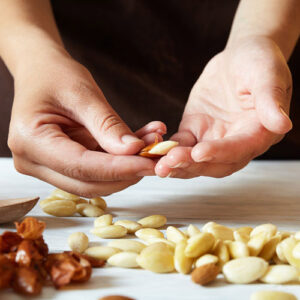
Many almond recipes, especially in baking and patisserie, call for blanched almonds but they can be expensive to buy and are not always of the freshest quality. They also seem to come in really small packets.
So, what are blanched almonds, why are they better than whole raw almonds, and how to blanch almonds yourself at home?
What are blanched almonds?
Technically speaking, blanching is the culinary term for very briefly adding an ingredient to boiling water and then cooling it in cold water (refreshing).
Blanched almonds are almonds that have had their skins removed.
Although it is easy to remove the skin from other varieties of nuts by roasting them in the oven and rubbing them in a cloth or teatowel, almonds are fairly thick skinned so the process of blanching is the tried and tested method of removing their skins.
How to blanch almonds
Blanching almonds is a little fiddly, yet not difficult, and well worth the effort in terms of saving money and ensuring quality.
Bring a pan of water to the boil (size dependant on how many almonds you are blanching) and drop your almonds in. Leave for 1 minute and then drain in a sieve or colander. Return the almonds to the pan and run with cold water. Drain again. You may feel the water is useful for getting the skins off your fingers, which it is. Use a separate bowl for this though or you will find yourself mining for almonds in a pan of skins. Which is really frustrating.
Now that you have wet and wrinkly almonds with loose skins they are much easier to peel.
Pick up an almond between your thumb and forefingers. Gently squeeze so that the almonds pops out of the skin. Put the newly naked almonds on a tray lined with a clean dry cloth, and discard the skins. At this point you can leave them to dry for an hour or so, or place them in a very low oven for an hour to dry out further.
Blanched almonds that have been dried in the oven will grind to a finer flour and have more of a toasted nutty crunch than those that haven’t. Consider what you want to do with your almonds though, as sometimes you want a more creamy delicate flavour and a bit more moisture going on. Think frangipane and macarons.
You can store your blanched almonds for up to a month in an airtight container, in a cool dry place. Ideally though, you should blanch them as required.
What to do with blanched almonds
As previously mentioned, blanched almonds are non-negotiable for classic patisserie and more refined styles of baking. For when you want to whip up a moreish frangipane, or muster up a mass of candy coloured macarons. For these you want to grind raw blanched almonds into ground almonds.
The number one choice for gluten-free baking, almonds are exceptionally versatile and can be used in place of wheat flour very successfully in some recipes. You may want to experiment with making your own almond flour, and playing with different drying times and grinds.
You can blanch almonds before roasting if you wish. Or toss them in a dry frying pan until golden and toasty before decorating cakes and biscuits, or tossing in a salad.
Some people prefer to eat almonds without skins. There is no reason not to blanch almonds before snacking, or even making almond butter. The only time you really would not want to use blanched almonds is when making almond milk. It would simply be a waste of time.
Are blanched almonds healthy?
Almonds are officially a superfood. They provide essential minerals, mono-unsaturated fatty acids, and are one the best sources of antioxidant Vitamin E. The ideal beauty booster, they are of particular benefit to skin, hair and nails.
Almonds with the skin left on are higher in fibre and have more of the nutrient content intact. That said, blanched almonds are still super good for you.
Blanched vs unblanched almonds
Blanched almonds are not necessarily better than unblanched, whole raw almonds. They are just different and are best suited for certain purposes.
Sometimes you want raw and rustic, with more of a wholesome natural feel. Think crumbly speckled almond cookies made from the almond meal that you ground from the leftover pulp after making almond milk.
Other times you may want a substitute for wheat flour. Not only can specks of dark almond skin look less refined but can have a bitter taste and a drying sensation in the mouth. This is because almond skin is a source of tannins. The same compounds that cause the lip puckering sensation in black tea and red wine.
We recommend that you buy unblanched almonds, and then blanch them yourself when need be. Our Australian almonds are pesticide-free. One of Australia’s most important crops, sustainable almonds are vital for our economy and our wildlife.
If you are looking for cost effective ways to use blanched almonds then you could buy almonds in bulk. Or why not do all your bulk shopping at our online store?
Is almond meal the same as almond flour?
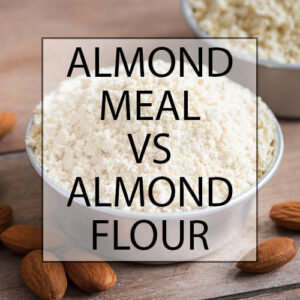
Almond meal, almond flour and ground almonds are all made from crushed sweet almonds.
Once specifically used in traditional baking such as macarons, marzipan and frangipane, they are gaining popularity in gluten-free and low-carb diets. But what is the difference – is almond meal the same as almond flour?
Almond meal vs almond flour
The difference between them is pretty straightforward. Whilst almond meal is made from whole almonds, almond flour is made from peeled blanched almonds.
Commercially bought ground almonds may be labelled as almond meal, almond flour, or just ground almonds. The difference is not official so it may or may not contain skins, and could be anywhere from coarse to finely ground.
What is almond meal?
Strictly speaking, almond meal is made from raw, whole almonds. This gives a slightly coarser texture, with a creamy flavour, and brown fibrous flecks from the skin. It is less refined than the flour, which is slightly cooked as well as skin-free. The blanching process removes a little of the natural water so the resulting flour can be more finely ground and has a milder, yet slightly nuttier flavour.
Is almond meal the same as ground almonds?
Theoretically, ground almonds should be without skins yet not as finely ground as flour. If a recipe states almond meal then you really want the completely raw version with its fibre intact. But if ground almonds are the only thing available then by all means use them. For classic recipes such as macarons, look for traditional ground almonds in the baking aisle.
Nutritionally, the only difference between the two is that meal has a higher fibre content, and also more antioxidants and minerals from the skin.
Is almond meal gluten-free?
Almond meal is gluten-free and a popular choice in gluten- and grain-free baking. All gluten free flours behave differently so the ratios used will rarely be a one-on-one switch for wheat flour. Depending on your dietary preferences and the results you are looking for, a blend of several alternative flours is probably the way to go.
Is almond meal low-carb?
Almond meal, and almonds in general, are the low-carb and keto dieters friend. Hugely versatile, they make a whole range of foods more accessible.
Can I use almond meal instead of almond flour?
You can use them interchangeably but there will be differences in the final bake. Almond flour is lighter in colour and more finely textured so gives a more polished result. A batch of cookies made with almond meal will be deliciously wholesome and rustic, whereas almond flour would give a cake the light fluffy texture it requires.
How to make almond meal
To make almond meal, blitz whole raw almonds in a blender until fine. Use the highest setting and pulse in 10 second bursts, shaking the blender each time. If you go too far it will become almond butter, so as soon as it shows signs of clumping; stop! 2 cups of almonds will yield 1 cup almond meal or flour.
If you want a finer almond meal, with the fibre intact, try drying your almonds in a low oven before crushing.
How to store almond meal
Almonds oxidise quickly due to the high levels of omega-6 and Vitamin E. Keep your almond meal in an airtight container, preferably one that blocks out the light. Keep in a cool dark place for up to a month.
How to make almond meal from almond pulp
You can also make almond meal from the pulp that remains after making almond milk. Almond meal made from pulp will be drier and lighter, with a finer texture.
Squeeze as much as the liquid from the almond pulp as you can. It will keep in the fridge for a week, and if you don’t want to use it to make almond meal then you can simply add it to smoothies or yoghurt. To dry it out to make almond meal, spread in a layer on a baking tray lined with parchment. Bake for a few hours at 90C, stirring often. You want it to dry yet not become brown. Cool completely before blitzing to a fine dry powder.
Our pesticide free Australian almonds are available to buy in bulk, or why not check out our range of bulk buy groceries?
How to make the perfect roasted and seasoned almonds
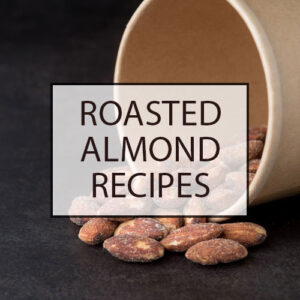
Raw almonds are a lovely thing, with their solid crunch and creamy nutty flavour. In fact, they are pretty much the ideal snack. But lets face it, there are times when you just want something…more. Enter, roasted almonds. All the fun of a bar snack, with better credentials.
Making your own roasted almonds is not only cheaper but also gives you way greater control over the ingredients. Best of all, you know they are fresh.
Roasting almonds transforms the texture into something altogether more crisp and deepens those natural nutty tones.
How to roast almonds
Almonds are roasted in the oven, with or without oil. Using oil makes them more crisp and adds an extra dimension of flavour. You can use any oil you like; olive oil or coconut oil both work well. You will need a good solid roasting sheet and a pre-heated oven. Moving them around occasionally helps them to roast evenly, so have a spatula at the ready too. Note to self…roasted nuts get really hot so don’t go touching them with your bare hands.
How long do you roast almonds?
Nuts take about 15 minutes to roast, but you need to keep a close eye on them as they can go from 0 to 60 super quickly. Anywhere between 8 to 12 minutes is usually optimal. You will need to stir them several times for best results.
What is the best temperature to roast almonds?
Roast your nuts at 350F/180C/Gas 4.
Soaking and roasting almonds
Activated almonds, or soaked almonds, are soaked in salted water and then dried at low temperatures in a dehydrator where they become crisp yet not technically roasted. They can also be soaked and then roasted. Soaking almonds is said to be beneficial to digestion and increase the availability of nutrients in nuts, yet anti-oxidant vitamin E can be lost at the higher temperatures required for roasting. To prevent degradation of these volatile vitamins you would need to go as low as 120F/50C which is nearer to dehydration temperature than roasting. Feel free to experiment with times and temperatures but we would suggest that if nutrition is your main goal then choose soaking followed by dehydration, but when flavour is more important then stick with roasting. Either way you will benefit from the nutritional properties of almonds.
How to season roasted almonds
When it comes to roasting nuts, salt is essential. But all too often it coats unevenly, or just falls off altogether. This is where brining comes in, and it is how the commercial producers get those perfectly salted almonds. The nuts are soaked in a simple brine solution for 20 minutes, drained, and roasted. You don’t need to add any oil.
For 500g almonds (that’s roughly 4 cups), dissolve 2 tbsp sea salt in 1 cup of hot water. Soak the almonds for 20 minutes and then drain off the brine. Roast in a single layer on a baking tray at 180C for about 15 minutes, turning every 5 minutes. If you wish, you can toss the cooling almonds in a tbsp oil and add a scatter more salt.
Almonds also roast well when tossed in ground spices and oil. You can pretty much use any spices you wish, but take care as some have a tendency to burn more easily than others. Paprika for instance.
Roasted almonds recipes
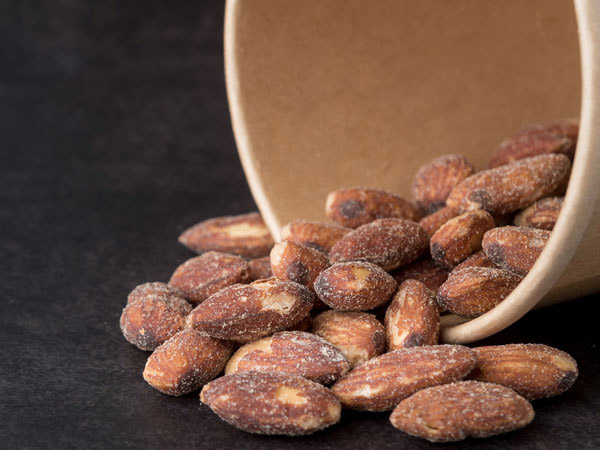
Honey roasted almonds
2 cups raw Australian almonds
1 tbsp oil
2 tbsp honey
1/2 tsp cinnamon
1/2 tsp fine sea salt
- Line a baking tray with parchment paper
- Preheat the oven to 180C/350F/Gas 4
- Toss the almonds in the oil and spread on the tray
- Bake for 5 minutes.
- Tip the now warm almonds into a bowl with the honey, salt and cinnamon.
- Stir to combine.
- Return to the baking tray and bake for a further 10 minutes, stirring occasionally.
- Remove from the oven and cool on the tray.
Coconut roasted almonds
Follow the above recipe but omit the cinnamon and stir in 1/3 cup dessicated coconut. You could add a touch of vanilla paste.
Chilli roasted almonds
2 cups raw Australian almonds
2 tbsp oil
1/2 tsp cayenne pepper
1/2 tsp ground cumin
1/2 tsp ground chipotle
1/2 tsp fine sea salt
- Follow the instructions for the above but bake for 10 minutes at the initial stage
- Toss the nuts in the spices and return to the oven for 5 minutes.
- Leave on the tray to cool.
Cocoa roasted almonds
Add two teaspoons raw cacao powder to the honey in the first recipe.
Savoury roasted almonds
Toss almonds in soy sauce and sesame oil before roasting.
If you are looking for cost effective ways to stay healthy then you could buy almonds in bulk. Or why not do all your bulk shopping at our online store?
How to make almond milk at home
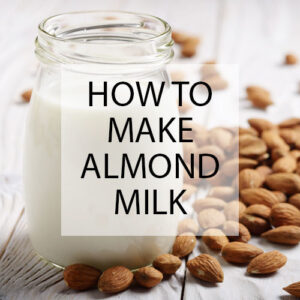
In order to add body and frothing capabilities to commercial almond milk, manufacturers often add various fillers and additives.
Learning how to make almond milk at home gives you total control over the ingredients used. The result will be naturally thick and creamy almond milk.
How is almond milk made in a factory?
Most commercial almond milk is made from Californian almonds. There, the demand is high and the supply unsustainable. A process causing damage to an already fragile ecosystem. Almond milk has been around for centuries but the process came under mass commercialisation just over a decade ago, putting wildlife under threat and endangering the honeybee.
Most industrially produced almond milk contains around 2% almonds. This results in a thin flavourless liquid, which is why so many cartons of almond milk come with a long list of ingredients. Added to provide body and flavour, these extra ingredients may be naturally derived yet are still additives nonetheless.
How to make almond milk at home
To make almond milk you will need fresh, whole, almonds and water. Go for filtered water if that is what you would normally drink at home. You will also need a blender, a sieve, and a clean tea towel or cloth. And a bowl large enough to sit the sieve in.
You may wish to add flavour to your almond milk with a little cinnamon or vanilla. A word to the wise – do try homemade almond milk once before deciding it needs flavouring. Almonds are naturally creamy so the stuff you make is way different to the store bought variety.
The best way to avoid sustainability issues around your almond consumption is to buy local. We wrote all about sustainable Australian almonds and how they are produced, right here.
To make roughly 1 litre of creamy almond milk you will need 1 cup almonds and 4 cups water. You can adjust the ratio of almonds to water depending on how thick you want the result to be. Remember that we said there is about 2% almonds in commercial almond milk? Using 4 cups of water brings that percentage up to 25%, so you can imagine the difference.
Blitz the almonds with the water for about 3 minutes or until the almonds are completely blended. Place the sieve over the bowl, and line with the cloth. Pour in the blitzed liquid and leave to strain until the residue is almost dry. You can give it a helping hand by squeezing the cloth as if you are wringing out a dishtowel. Which, strictly speaking, you are. Pour the resulting almond milk into a container and keep in the fridge for up to 4 days.
Don’t waste the strained nutritious fibre remaining. Sprinkle it on your granola or add it to a Chinese recipe. You can even use almond pulp to make almond meal.
Why not save money and buy almonds in bulk or check out the rest of our wholefoods bulk groceries at our wholesale store
How to make homemade almond butter.

Homemade almond butter is way better than the store bought stuff. Not only does it taste great but it costs less to make too.
Roasting your own almonds before blitzing them means you can have full control on the oil and salt content, as well as whatever else may be lurking in commercial almond butter.
Buying almonds in bulk quantities is by far the most cost effective way to make all of your almond based recipes. Why not have a go at making your own almond butter and see just how easy it is to make something nutritious and delicious.
The nutritional benefits of almond butter
Although most of us eat almond butter because it tastes good, we also choose it above peanut butter because of its nutritional content. It is an excellent way to add fats and protein to your breakfast or smoothie, and will keep you feeling satisfied for longer. Spread it on wholegrain toast with a sliced banana for a healthy breakfast, or add a spoonful to a 3pm cacao smoothie for an afternoon energy boost. (We discuss the benefits of cacao vs cocoa here) Either way it will help slow down the digestion of sugars and help to balance your blood sugar levels.
Almond butter is full of monounsaturated fats to help protect against heart disease. Almonds are also one of the best sources of antioxidant Vitamin E, and contain magnesium that helps to control blood pressure.
Find out more about Australian almonds and the nutritional benefits of almond butter…
How to make homemade almond butter
Whilst you can use raw almonds to make a creamy smooth nut butter, most of us prefer that roasty toasty just slightly salted thing that we associate with peanut butter. The stuff that sticks to the roof of your mouth. You don’t need to add oil, although adding a touch will help them along nicely. You could also experiment with adding sweet tones to the roasting tray, such as a shake of cinnamon and a drizzle of honey. Or up the savoury ante by tossing them in paprika and a tiny amount of celery salt. Any liquids or syrups need to be added at the roasting stage or it may not come together properly.
To make almond butter you need at least 3 cups of almonds in order to cover the processor blades. Roast them in a moderate oven on a baking tray, with a little oil and salt if you wish, for about 10 minutes. 180C should do it. Leave to cool for a further 10 minutes. They will blitz nicely if still slightly warm.
Can you make almond butter in a blender?
Yes you can make almond butter in a blender but it really needs to be a more powerful type with robust blades and a decent motor. It will actually take less time than in the processor, but you need to be careful to pulse so as not to burn the motor out. An extra quarter cupful of oil helps it along. Add your roasted almonds to the blender cup, along with a few tablespoons of oil, and blitz until you have a smooth semi liquid nut butter. You will need to scrape the sides down a few times, and use the rest of the oil if required. If you really want to make the almond butter with no added oil, then whether you get away it will depend your particular blender.
To make the almond butter in a food processor, add the roasted and cooled almonds to the processor bowl and fix on the lid. Set running at a medium speed and keep it going for about 10 minutes. You will have what looks like almond meal for about 8 of those minutes, but eventually it will come together. Once it has formed a mass like pastry, it will start to break down and form gooey butter.
Does almond butter have to be refrigerated?
It is best to keep your almond butter in the fridge as it does not contain any preservatives. The high fat content of nuts means they can turn rancid quickly. You can keep it in the fridge for several weeks. If it gets that far.
Remember that it is way cheaper to buy almonds in bulk. Consider buying bulk chipped and broken almonds for your nut butter, it will help your money go even further. Look for even greater savings at our bulk food store.
All about Australian almonds
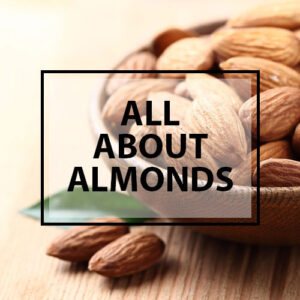
Australian almonds are awesome in so many ways that it can be difficult to know where to start.
So, in our ultimate guide to all things almond we begin with the basics. We look at where, and how, they grow. We also look at the many ways that almonds can benefit your health.
Finally, we have some ideas on what you can do with your Australian almonds once you get them home.
Where do almonds come from?
Also known as sweet almonds, almonds are the edible seed of a stone fruit related to peach and apricot. Originally from Asia, almonds grow in many parts of the Mediterranean, California, and right here in Australia. In fact, did you know that they are one of Australia’s most important crops? They boost our economy, our communities and our way of life.
There are over 15 million almond trees across Australia, mostly concentrated in the Riverina region, Sunraysia, and the Riverland plains of Northern Adelaide. A beautiful sight.
How do almonds grow?
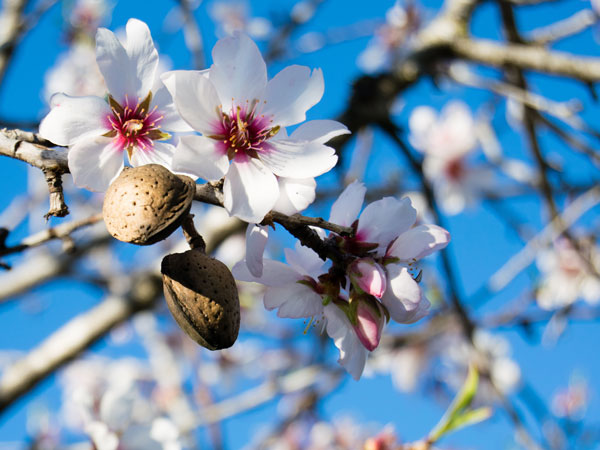
Almond trees are blessed with that rare ethereal beauty of all blossoming trees. Grown in orchards, the buds first appear in winter and blossoms burst into life around July. In full bloom by late winter, the almond blossom is ready for pollination by bees. A perfect example of nature working in tandem, beekeepers place their hives in the orchards ready for pollination season. The trees benefit, and the byproduct of this is fresh floral scented honey. A win win.
The tiny green nutlets appear in spring and develop through the summer. Once developed, but before they split open, these are known as green almonds. Eaten as whole fruits, the green outside flesh can be somewhat bitter, but the young undeveloped almond kernel inside is pale, soft and creamy. By midsummer, the fruits open and expose the seed inside. This is the husk of the almond, within which lies the kernel.
Once split open, the nut itself begins to dry. The fruits are ready for harvest once the stem weakens and the fruit comes easily from the tree. Harvested between February and April, the almond fruits (known as drupes) are shaken from the trees. Left to dry on the orchard floor for about two weeks, they are then picked up and sent to the huller. The almonds are first hulled. Some are shelled whilst others are sold with the shell on. Some are processed further into blanched, slivered or chopped almonds. Or ground into almond meal or flour.
Should almonds be organic?
Because organic certification is an expensive and lengthy process that is not always of benefit to the farmers or the consumer, the questions here should be about sustainability and the use of pesticides. Big brand organic is not always what we expect it to be, as it often has only the bare minimum of legislative requirements met.
However, minimal intervention is something that we can all get behind. It is open to, and achievable by, the smallest of farms, and encompasses the true visions of what organic is all about. With a focus on food quality, environmental impact, and good husbandry, minimal intervention farming is free from harmful pesticides and damaging practices. An holistic approach to farming, it considers every impact at each step of the supply chain.
Are almonds good for you?
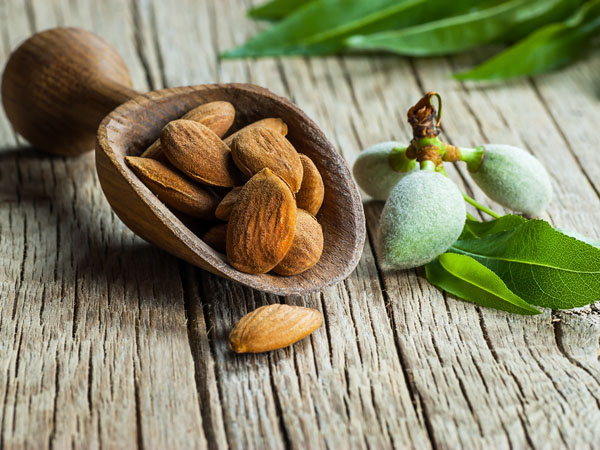
Australian almonds are a bonafide superfood and come with a host of nutritional benefits. Nuts have some of the highest antioxidant levels among plant foods and are also rich in fibre, healthy fats, plus other vitamins and minerals. There are roughly 20 almonds in a serving, which is equivalent to one quarter of a cup or 1 ounce. That’s a very small handful.
The health benefits of Australian almonds
Almonds are a good source of essential minerals zinc, magnesium and potassium. They are also rich in antioxidant Vitamin E that provides support for the tissues of the heart, brain and lungs. Monounsaturated fatty acids found in almonds can help to balance cholesterol levels.
A portion of almonds is made up of 13% carbohydrate, 13% protein and 74% healthy fats as well as a whole host of beauty boosting nutrients. Magnesium and potassium help to beat the bloat, whilst Vitamin E, biotin, and sebum regulating Vitamin B2 all help promote healthy hair, skin and nails.
Are roasted almonds as good as raw?
Whilst raw almonds have a certain creamy quality, a roasted almonds have a depth of flavour and a definite crunch. The water content of raw nuts is lost slightly through the roasting process so they become slightly more concentrated. The nutrient content remains the same, yet volatile antioxidants such as Vitamin E can be lost with the heat of roasting. If you prefer to eat roasted almonds, roasting them yourself means you can cook at lower temperatures and control the amount of oil and salt added.
Blanched almonds have the skin removed and are used in recipes where the brown skin would change the look or the taste of the dish. Most desserts and baking use blanched almonds instead of whole. The skin of almonds does have health benefits however, as it contains nutrients and increases fibre content.
What are activated almonds?
Activated almonds are soaked in salted water for anywhere between 7 and 24 hours. They are then dried slowly in a cool oven. The soaking process encourages germination and therefore increases the nutrient value, as well as breaking down phytic acid which can inhibit mineral absorption.
Is almond meal the same as almond flour?
Almond meal is made from raw, unpeeled almonds whilst almond flour is made from blanched almonds. Almond flour is finer and lighter in colour than almond meal so is more suited to lighter cakes and pastry.
Ground almonds are the same thing as almond flour. At some point during the rise of gluten free baking the name simply changed.
What can you do with almonds?
-
You can make your own almond butter.
-
You can make your own almond milk.
-
You can make your own almond meal.
-
You can blanch almonds.
-
You can make delicious roasted almonds.
-
You can toast them.
-
You can caramelise them.
-
You can bake with frangipane.
-
You can make almond brittle.
Or you can of course just eat them.
Check out our pesticide free Australian raw almonds, or buy in bulk online at our wholesale grocery store
Raw Almonds for Weight Loss and Overall Calorie Control
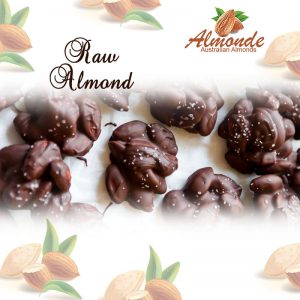
Almonds are a very convenient super food and excellent for weight loss and calorie control. Almonds are packed with lots of anti-oxidants, protein, fiber, vitamin E, manganese, magnesium and more. Pesticide free almonds can be eaten raw or roasted and make wonderful healthy food ingredients whole or ground . Almonds are used to make almond milk, butter, flour, oil, paste and many more healthy products. How about carob coated? or even dipped in organic high cacoa content chocolate.
As almonds are rich in anti oxidants, it helps to reduce oxidative stress, inflammation, aging and severe diseases such as cancer. Raw almonds are loaded with vitamin E, manganese and magnesium which aid to develop cell membranes of individual’s body and protect cells against oxidative damage. It will also lower blood sugar and blood pressure levels.
Almonde is controlled and owned by an Australian family food wholesale business. We gather insecticides free and high grade almonds from growers in the SA of Australia.
Visit our parent company online store at operafoods.com.au to know more details about the product and buy your favorite products now in bulk for overnight delivery.

 D5 Creation
D5 Creation